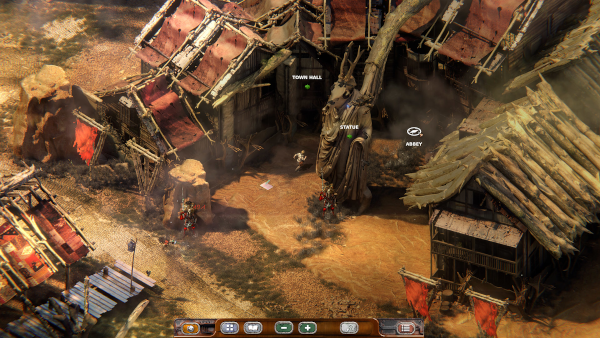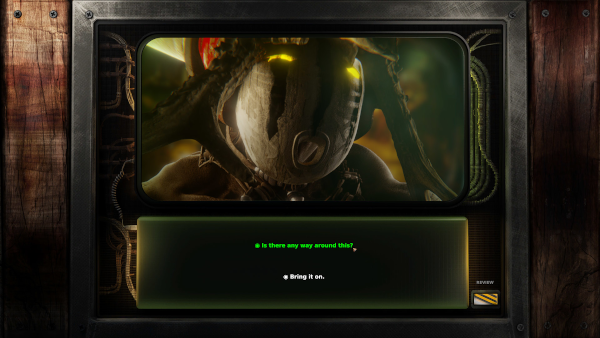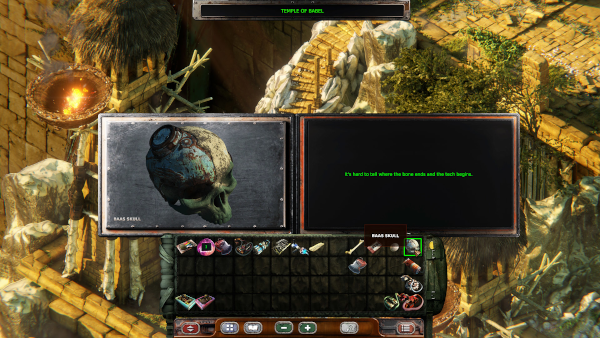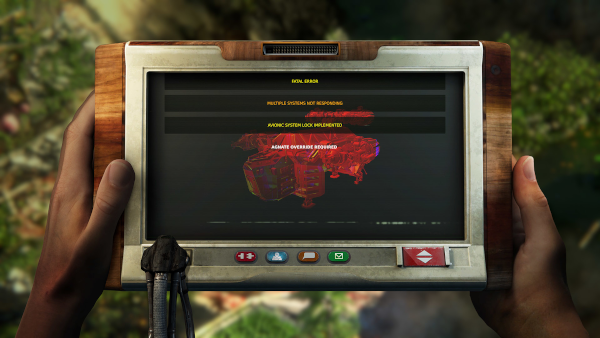- Joined
- Nov 29, 2010
- Messages
- 19,587

My idea for a Mass Effect style ARPG.
Where are the romance options?

My idea for a Mass Effect style ARPG.

My idea for a Mass Effect style ARPG.
Where are the romance options?

My idea for a Mass Effect style ARPG.
Where are the romance options?
You can only romance Mordin.

My idea for a Mass Effect style ARPG.
Call it Pyke Effect Eysium. (And it should have RTWP combat.)My idea for a Mass Effect style ARPG.
They are fighting ME3 enemies and yet we have Jack and Thane from ME2?
(And it should have RTWP combat.)
Ackchually, Thane and Jack do have combat scenes in ME3 if you save them in ME2.
Whatever fashion and old clothes they wear on the adventures, that's Thane and Jack's business.Ackshually - I'm not talking about the fact they are fighting, I'm talking about their designs. That's ME2 Jack - the bald one. ME3 Jack has hair and a different suit. And Thane is hospital bound so the only time he actually fights gets killed because of it. So those are clearly ME2 timeline Jack and Thane.
My idea for a Mass Effect style ARPG.

Ya gotta throw it at our GOG or Steam libraries...

Ya gotta throw it at our GOG or Steam libraries...
I threw money at your GoG just recently and I still don't see the ME ARPG, what gives, is this a known bug?
















Interview: Beautiful Desolation Dev Team
Since February 26, I’ve been playing Beautiful Desolation and loving it. A point-and-click adventure game launching gamers into a bizarre yet wondrous South African future, its universe breathes on its own, a world with secrets to share and marvels to behold. Bearing in mind the visual aesthetic that draws comparisons to classic isometric titles (Fallout, Torment: Tides of Numenera), coupled with play reminiscent of (dare I say) Sanitarium, I chatted with devs Nic and Chris Bischoff, co-founders of The Brotherhood.
Erik Meyer: Anyone experiencing through Beautiful Desolation will see how apt the name truly is; the art is truly breathtaking, and unlike other games, interactive content in any specific location is infrequent, creating an environment that joyfully swallows the player. With so many titles jam-packing every screen with NPCs and stuff to do, how did you arrive at your aesthetic?
BD: Our love for the post-apocalyptic genre pushed us to try something different to what had been seen before. A new world rising from the ashes of a ruined one will always be a fascinating thing to explore artistically, especially when you have the freedom to add your own unique twist on it.
Isometric art has the ability to make a player feel small and overwhelmed by the world around them, and we tried to use that feeling of scale to show the world’s expanse and how nature is taking back its place.

EM: The few isometric games games I might compare Beautiful Desolation to visually (Torment: Tides of Numenera, Tyranny, Disco Elysium) all fall into the RPG genre and all use stats/equipment as aspects of character development in an evolving narrative; your work lands squarely in the point-and-click adventure category, so how do you see the mechanics of the game environment driving the story? What constraints come with point-and-click that wouldn’t be there in a RPG and vice versa?
BD: When we designed Beautiful Desolation, we tried to box ourselves into the idea of a single genre. The mechanics of a point-and-click game provided a strong foundation to build our game, but we wanted to give the player choice and ownership over their character and the story they experienced.
I love the narrative focus of tabletop RPGs, and I wanted players to feel that same spotlight when it came to Beautiful Desolation’s writing and story.
Point-and-click games can offer a focused larger narrative, whereas RPGs tend to rely more on smaller stories in the world to build up a player’s connection to the game. I would say that one area where both genres have their own unique limitations and constraints is in the addition of side quests.
Side quests are a central theme to RPGs, and the mechanics of an RPG allow them to fit into a story very well. In an adventure game, smaller side quests can confuse the narrative and be a frustration rather than a positive mechanic. We tried to ride a fine line, ensuring that our optional storylines in the game were still tied closely to the main story.
EM: From a narrative design standpoint, I’m curious about your process. Did you start with locations and then decide which NPCs would be there with varying needs for the player to fulfill, did you start with interesting, quirky NPCs and build environments around them, or did you reverse-engineer story elements from nonlinear technology-related events? Or did you have another method for story development entirely?
BD: The first step in our process was to design all of the factions in the story on paper. We then created the 3D models and worked on their visual representation in the world. The combat arena got an early treatment because we felt this would convey the base intent of the characters and how they would fit together socially.
Once we had the characters designed aesthetically and their history and culture locked in, we looked at what their home would need and then designed it from there. We did the maps last because their locations would be driven by the narrative.

EM: Perhaps it’s because I’m used to action-oriented games, but I find Beautiful Desolation feels dangerous despite the near-absence of fighting, which creates a sense of urgency and an attention to detail that complements the gorgeous setting. When it comes to mood, what is your dev thought bubble as you create (and maintain) this balance between personal trauma (loss, alienation, personal tragedy) and discovery (wonder, personal achievement, comradery)?
BD: We created a Venn diagram of the emotional journey that we wanted our three main characters – Mark, Don and Pooch – to go through and then mirrored some of those journey points on the stories of the people in the world. The thread of healing one’s fractured self, with the help of others, ties our world together – from the smallest story to the overarching plot.
Each story feels like it will have some sort of emotional impact on the games main characters – that they will take a small piece of what they have learned and incorporate it into their own story. Mirroring the physical journey you are taking, with their own personal emotional journey.
The feeling of wonder and exploration comes from us wanting to make the world a new and layered experience for the player. We tried to ensure that there is always something different around the corner. That, tied in with the idea to keep a strong thread of fractured relationships and histories in each story, makes even the most alien and unfamiliar settings and characters have some sort of anchor to hold on to.
EM: The game explores aspects of personhood and bias, introducing players to glitchy robots, undying cyborgs, religious zealots, would-be saviours of society, and a range of quasi-human experiments gone wrong/right. Taken as a playing experience, BD invites thoughtful discussion around the future of humanity; do you see your work more as a cautionary tale or as a safe space in which to imagine some of these ideas before they manifest in the world we live in?
BD: I have a huge amount of faith in the good of people. I think that humans are capable of the most amazing self sacrifice, while at the same time we’re also capable of terrible things. That constant push and pull of our nature is fascinating.
I see the story of Beautiful Desolation as a tale of resilience. Even when the world was destroyed, when life as we know it came to an end, people survived and thrived. Even though the stories we tell tend to lean more on the darker side, we always try to show the resilience of the human spirit and try to find ways that show the good in people.

EM: The South African setting adds geographical and cultural layers that both draw the eye and clearly provide details/traditions that you integrate into your projects. From a game asset standpoint, how do you go from the genesis of an asset to its integration into the world, and as you’ve blended fantasy with reality, what things have been left out and/or blurred the lines?
BD: Much of the appeal of a post-apocalyptic world comes in seeing how people repurpose objects from the old world into the new. A street sign becomes a shield, or a farming instrument becomes a weapon.
The inclusion of alien technology and influences in the world also created many interesting opportunities to push the boundaries of the ‘cobbled together’ feel of the technology.
To create many of the assets, we start from the position of an object and think of how the people in the world could have repurposed it for another use. A bucket becomes a stool, or a vehicle becomes part of a barrier. We did, however, want to create a world that wasn’t just pieced together from the ruins of the old. The inhabitants of this place have their own art, their own history, and showing that was always at the forefront of our design process.
EM: Many of the details that make up the game universe have odd twists; Mark and Don experienced tragedy in the 1970s and, at the beginning of the game, live in an alternate 1980s that has been influenced by technology harvested from the Penrose. This creates a number of quirky details, such as the PDA, which has a wood veneer and a serial port, among other vintage-80s touches. In establishing mood, how much do you see these things contributing, and how far do you go down that rabbit hole?
BD: Those elements were fun to design! For many of those pieces of engineering, we looked to the automotive industry. Many ‘concept cars’ in the 70s and 80s are now commonplace in 2020. They took the technology of the day and tried to marry it with the design of the time, which was exactly what we were attempting to do.
It was a challenge as to how far to push those elements before they become silly – so we tried to look at any of our technology through the eyes of an industrial designer. This also extended to our main game UI.

EM: The game had a successful Kickstarter campaign a ways back, and I’m interested in how you see social media and the business end of indie gaming contributing to what you do. Obviously, developers need to get the word out about their games, but Twitter and Kickstarter and other obligations can be jobs unto themselves. Is it more about controlling the flow of information at the right times and minimizing the hours stolen from actual production work, or do you view everything as part of an organic process allowing you to develop the games you love?
BD: Community interaction is extremely important, and we always strive to put it at the forefront of what we do. Without the community of supporters we’ve built up around our games, we wouldn’t be able to do what we do and love!
I think where we most run into hurdles is that, in a story-based narrative experience, we want the players to have a feeling of wonder and discovery as they play the game – so we only try to give tiny peeks into the world or story that’s in store for them!
We try to chat to the Kickstarter Backers as often as we can, even to reassure them that we are working diligently on the game and putting our all in to make a piece of art that everyone involved can be proud of!

Read my post on the page before this. The big spoiler one. It is pretty close to devs intention.Just got to the temple at Babel and saw the statues.
My 2 biggest complaints about the game is 1, the MASSIVE amount of backtracking - although this has been made better with the recent hint system showing new possible actions.
Second was the lack of any real explanation of WTF is going on and the backstory - The train only tells you a small part in between his tulip rantings.
But upon entering this temple - BOOM. I instantly knew what was going on. At least of the part of time the game is set in. Still don't know anything of how the world got busted or what the Penrose is.
Let's watch.
Heavy spoilers below.
Dullahan is you, the player, Vaariyar and Inja are your companions. And through some time travel fucketry they made statues of you and sent them through time to this freaky deaky island
Inja is the doge
That must mean Vaariyar is Don
EDIT: OK the guy says it all now, not so impressive I figured it out then
Edit again:
Yep, nowhere near enough explaining WTF is going on.
Missed opportunity if you ask me. Why create such a rich world and then not give the player a chance to learn what it is? What happened to the world? What is the Penrose? What do all the Mcguffins that you spent 1000 hours of flying back and forth to collect, actually do? etc..

i thought the item combo puzzles are one of the most obvious and logical in the genre. finding items and your objectives require you to really pay attention in the dialogue (like) but i guess asking that much is still to much these days.finding the cheznyama pet require you to remember that the guy in whitherberg is a monger hunter whose failed finding it

Indeed. :DI've seen it used by other people to describe simply using the mouse cursor to select objects in any capacity.

The setting is gorgeous and interesting, as well as the music. The ridiculously over-the-top accents are entertaining. But in terms of gameplay, it's like the world is not "busy" enough. There's very little to actually DO in this huge setting.

Very different.How does it compare to games like Primordia?







